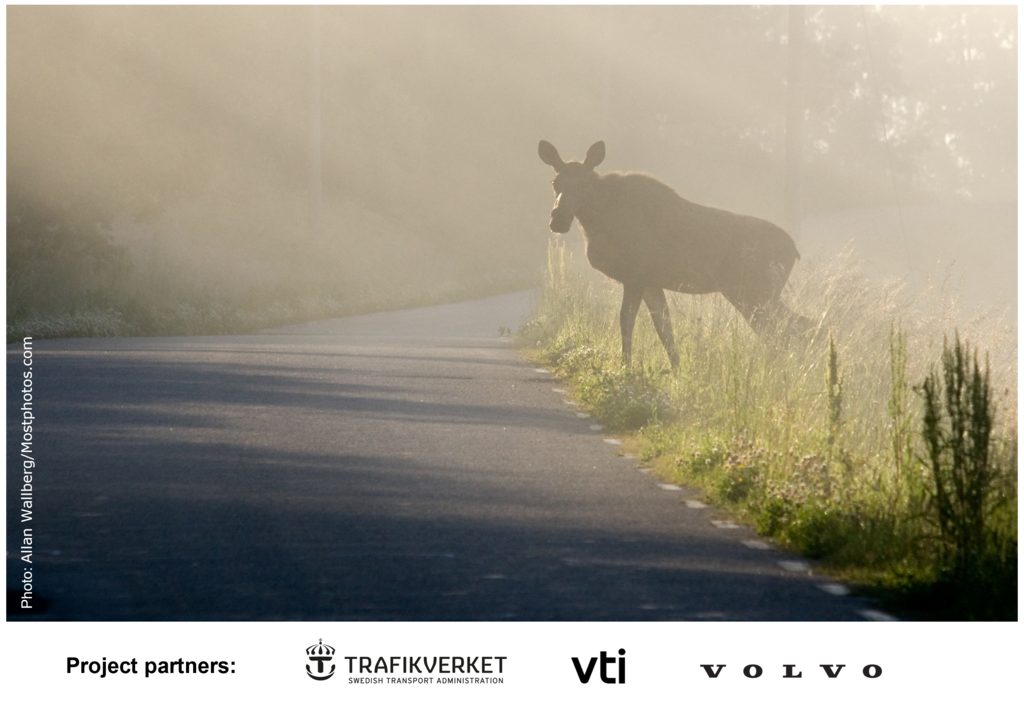ITS measures in vehicles and infrastructure as a solution for reduced wildlife accidents
The projects goal is to identify measures with the greatest potential to reduce the number of wildlife accidents. Both Intelligent Transport Systems (ITS), measures in the infrastructure and driver support systems will be considered. Development areas are identified and knowledge gaps are identified in collaboration between relevant actors in the field.

Despite measures to reduce the number of wildlife accidents in Sweden, development has gone in the wrong direction. Between the years 2010 and 2021, the number of wildlife accidents has increased by 37% on state roads. The increase in the number of traffic accidents with game on Swedish roads is mainly due to an increased amount of traffic, as well as high speeds on the parts of the road network where game is common. Over half of wildlife accidents occur on roads with 4,000 vehicles per day and posted speeds of over 80 km/h. For wild boar, fallow deer and red deer, an increased distribution and growing game populations also contribute to the increase.
Speed is a decisive factor in the occurrence of wildlife accidents and its effects. Detecting game with in-vehicle and roadside systems (advanced driver assistance systems and infrastructural ITS measures, e.g. game detectors and variable message signs) are important enablers to reduce wildlife accidents. Research and technology development regarding the design of road side areas, animal behavior and ecology, etc. is therefore necessary.
Enabler to reduce wild animal accidents
In cooperation between authorities, business and academia, VTI, the Swedish Transport Agency and Volvo Cars want to combine our knowledge to investigate the possibilities of using infrastructural ITS measures and advanced driver support, individually or together, as part of a solution to reduce the number of accidents on the road.
By studying infrastructural solutions and advanced driver support, we want to achieve a sustainable transport system on the less frequented road network, where the proportion of accidental accidents per road user is higher in terms of the number of accidental accidents per kilometer compared to other road types and where there is no motivation to take physical measures.
Important enablers considered are the availability of good training data for game detection and the possibility of visibility of game on side areas while not encroaching too much on the game's natural habitat, as well as the potential of systems that apply communication between vehicles, and between vehicles and infrastructure.
The projects goal
The project is a pre study that is expected to generate a report containing the following:
- A compilation of identified infrastructural ITS measures and driver support systems with the aim of reducing the number of wildland accidents.
- A description of existing driver support systems and infrastructural ITS measures, e.g. game warnings and variable speed limits, which can help avoid or mitigate the effects of collisions with game.
- Proposals for development areas for infrastructural ITS measures and driver support systems with the aim of increasing the benefit and reducing the number of accidents in existing and new systems, as well as how, and if, they can be used in combination to further increase the benefit of the systems. Automation is also taken into account.
- A forward-looking strategy to enable new/more developed systems to reach the market.
Project time
Febraury 2023 - October 2023
Partners
Trafikverket, VTI och Volvo Cars
Contact person
ellen.grumert@vti.se
Vinnova number
2023-00119


